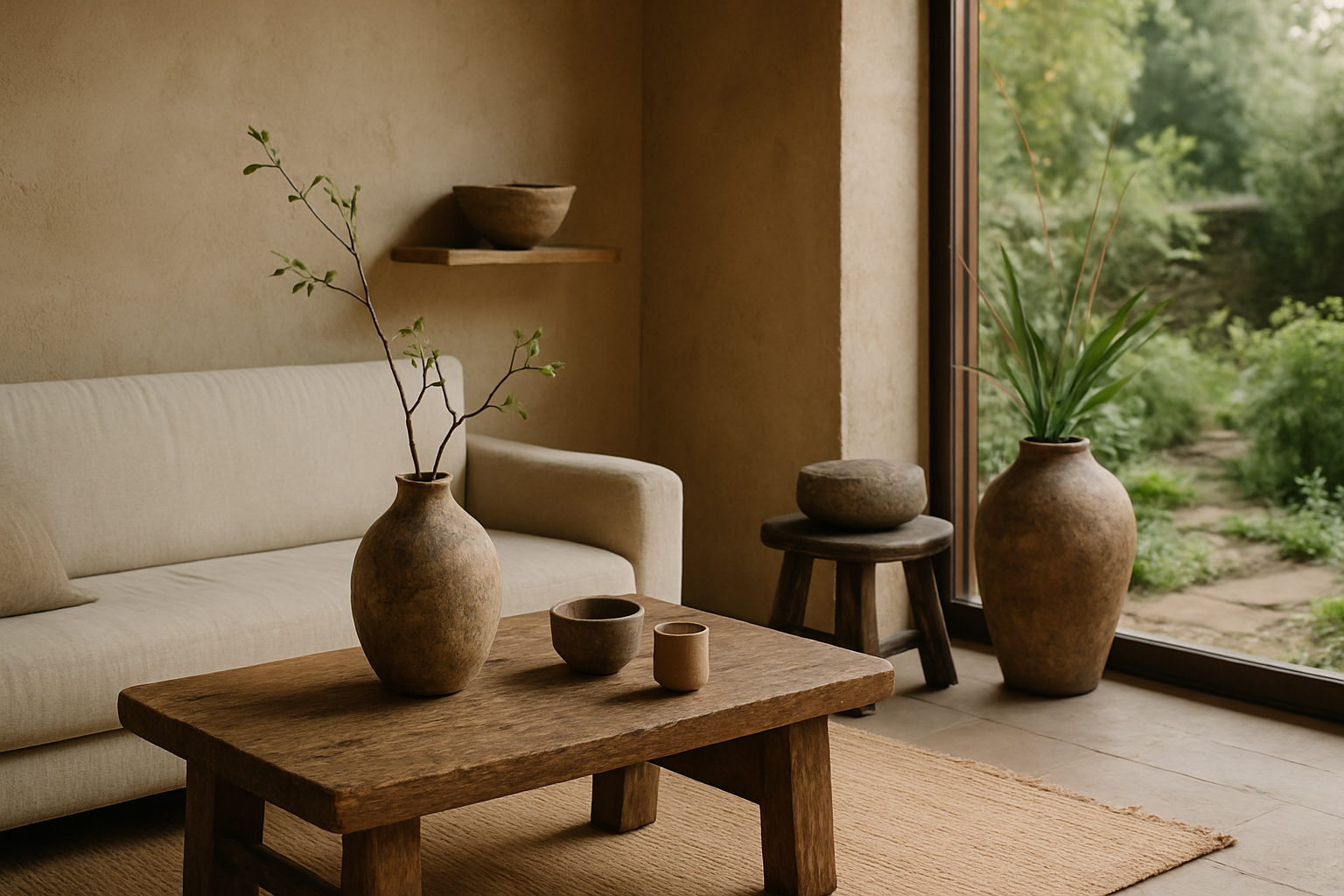Embracing Wabi-Sabi: The Art of Imperfect Beauty in Western Homes
The allure of perfection has long dominated Western interior design, but a quiet revolution is underway. Homeowners are increasingly drawn to the Japanese aesthetic philosophy of wabi-sabi, finding beauty in the imperfect, impermanent, and incomplete. This ancient concept is reshaping how we view our living spaces, encouraging a deeper appreciation for authenticity and the passage of time.

The Roots of Wabi-Sabi
Wabi-sabi originated in 16th century Japan as a reaction to the prevailing aesthetic of ornate, perfect, and luxurious design. The term combines two concepts: ‘wabi,’ referring to the beauty of humble simplicity, and ‘sabi,’ which celebrates the passage of time and the wear and tear that comes with it.
In traditional Japanese culture, wabi-sabi manifested in the tea ceremony, where simple, often imperfect utensils were prized over ornate ones. It also influenced architecture, with structures designed to weather and age gracefully, their imperfections becoming part of their charm.
Wabi-Sabi Meets Western Design
As Western design evolves, the principles of wabi-sabi are being reinterpreted to suit modern sensibilities. This fusion creates spaces that are both contemporary and timeless, blending the clean lines of Western minimalism with the organic, imperfect touches of wabi-sabi.
In practice, this might mean incorporating natural materials like unfinished wood, stone, and clay, each with its unique textures and imperfections. It could also involve displaying objects that show signs of age or wear, such as antique furniture or heirloom pieces, celebrating their history and character.
The Art of Imperfection in Home Decor
Embracing wabi-sabi in home decor is about more than just aesthetics—it’s a mindset shift. Instead of seeking flawless, mass-produced items, homeowners are turning to handcrafted pieces that bear the mark of their creators. This could be a slightly wonky ceramic bowl, a hand-woven textile with subtle irregularities, or a reclaimed wood table with visible knots and grain.
Color palettes in wabi-sabi-inspired homes tend to be subdued and natural, with earthy tones and muted hues predominating. Textures play a crucial role, with rough linens, nubby wools, and raw silks adding depth and interest to spaces.
Wabi-Sabi in the Garden
The principles of wabi-sabi extend beautifully to outdoor spaces. In contrast to manicured lawns and perfectly pruned hedges, a wabi-sabi garden embraces the wild and weathered. This might mean allowing plants to grow in their natural forms, incorporating found objects as garden art, or using materials that age gracefully, like weathered stone or rusted metal.
Wabi-sabi gardens often feature native plants that thrive with minimal intervention, creating ecosystems that change with the seasons. Water features might be designed to collect rainwater, their surfaces reflecting the sky and surrounding foliage, changing moment by moment.
The Psychology of Imperfection
Adopting wabi-sabi principles in home design can have profound psychological benefits. In a world that often demands perfection, creating a space that celebrates imperfection can be deeply liberating. It encourages mindfulness, asking us to slow down and appreciate the beauty in everyday objects and moments.
Research suggests that living in environments that embrace natural imperfections can reduce stress and increase overall well-being. By surrounding ourselves with objects that bear the marks of time and use, we’re reminded of the transient nature of life and the beauty inherent in the aging process.
Sustainability and Wabi-Sabi
The wabi-sabi aesthetic aligns beautifully with sustainable living practices. By valuing objects that age well and can be repaired, it encourages a move away from disposable consumer culture. This philosophy promotes the use of natural, biodegradable materials and the repurposing of old items, reducing waste and environmental impact.
Moreover, the wabi-sabi approach to gardening often involves working with nature rather than against it, promoting biodiversity and requiring fewer resources to maintain. This harmonious relationship with the natural world is increasingly important as we face global environmental challenges.
Challenges and Misconceptions
While the concept of wabi-sabi is gaining traction in Western design, it’s not without its challenges. There’s a fine line between thoughtfully curated imperfection and neglect, and achieving the right balance requires a discerning eye and deep understanding of the philosophy.
Some critics argue that the Western interpretation of wabi-sabi risks oversimplifying or appropriating a complex cultural concept. It’s important for designers and homeowners to approach wabi-sabi with respect and a willingness to engage with its deeper principles, rather than treating it as just another design trend.
The Future of Wabi-Sabi in Western Homes
As we move further into the 21st century, the appeal of wabi-sabi is likely to grow. In an increasingly digital and virtual world, there’s a growing hunger for authenticity and tangible, imperfect beauty. The wabi-sabi aesthetic offers a counterpoint to the sleek perfection of technology, creating spaces that feel human and lived-in.
We may see more integration of wabi-sabi principles in architecture, with buildings designed to age beautifully and adapt to their environments over time. In interior design, expect to see a continued emphasis on natural materials, handcrafted objects, and spaces that evolve and tell stories over time.
The embrace of wabi-sabi in Western homes represents more than just a design trend—it’s a shift in how we relate to our living spaces and, by extension, to life itself. By finding beauty in imperfection and impermanence, we open ourselves to a richer, more nuanced experience of our homes and the world around us. As we navigate an uncertain future, the timeless wisdom of wabi-sabi offers a path to creating spaces that are not just beautiful, but deeply meaningful and sustaining.




